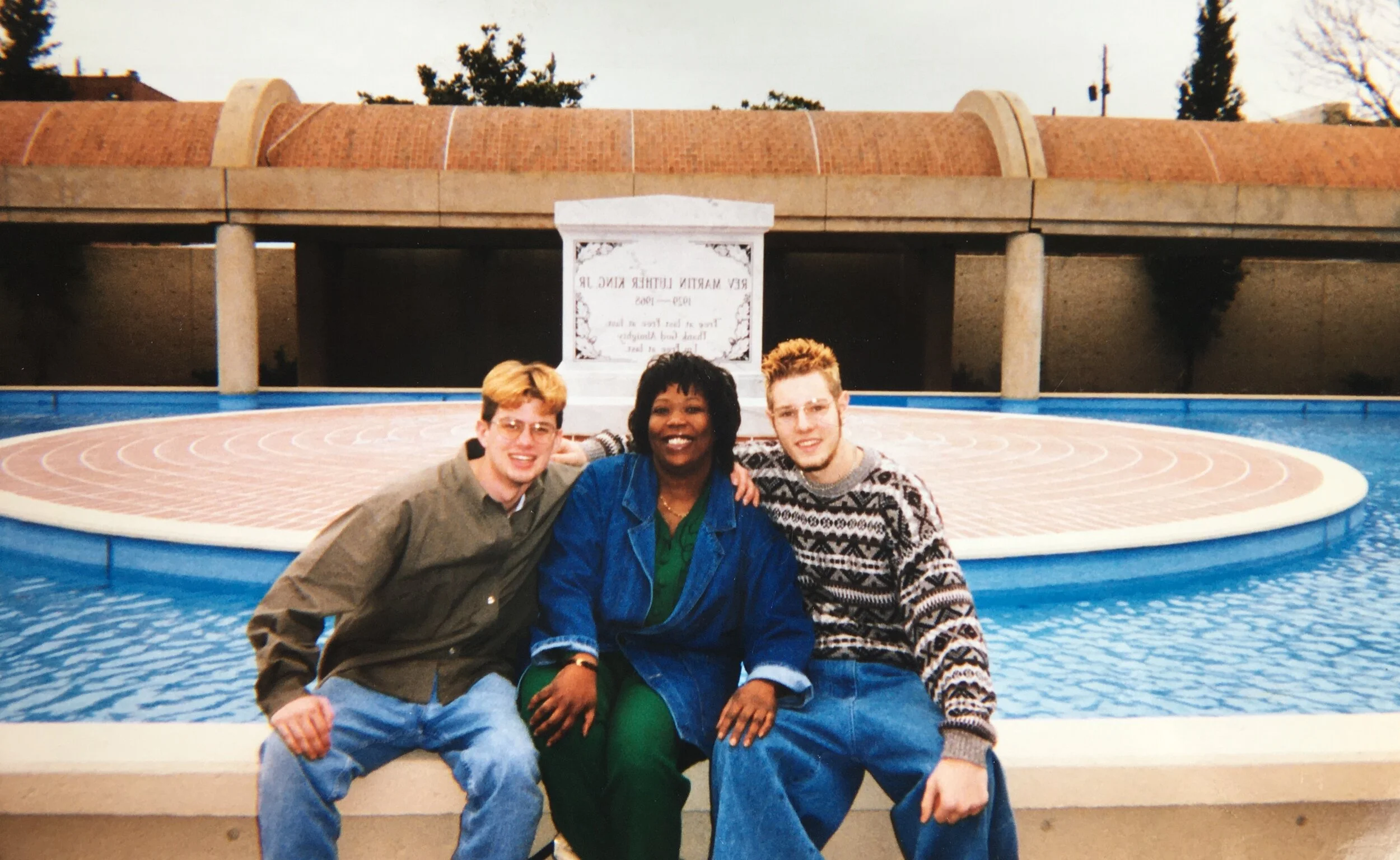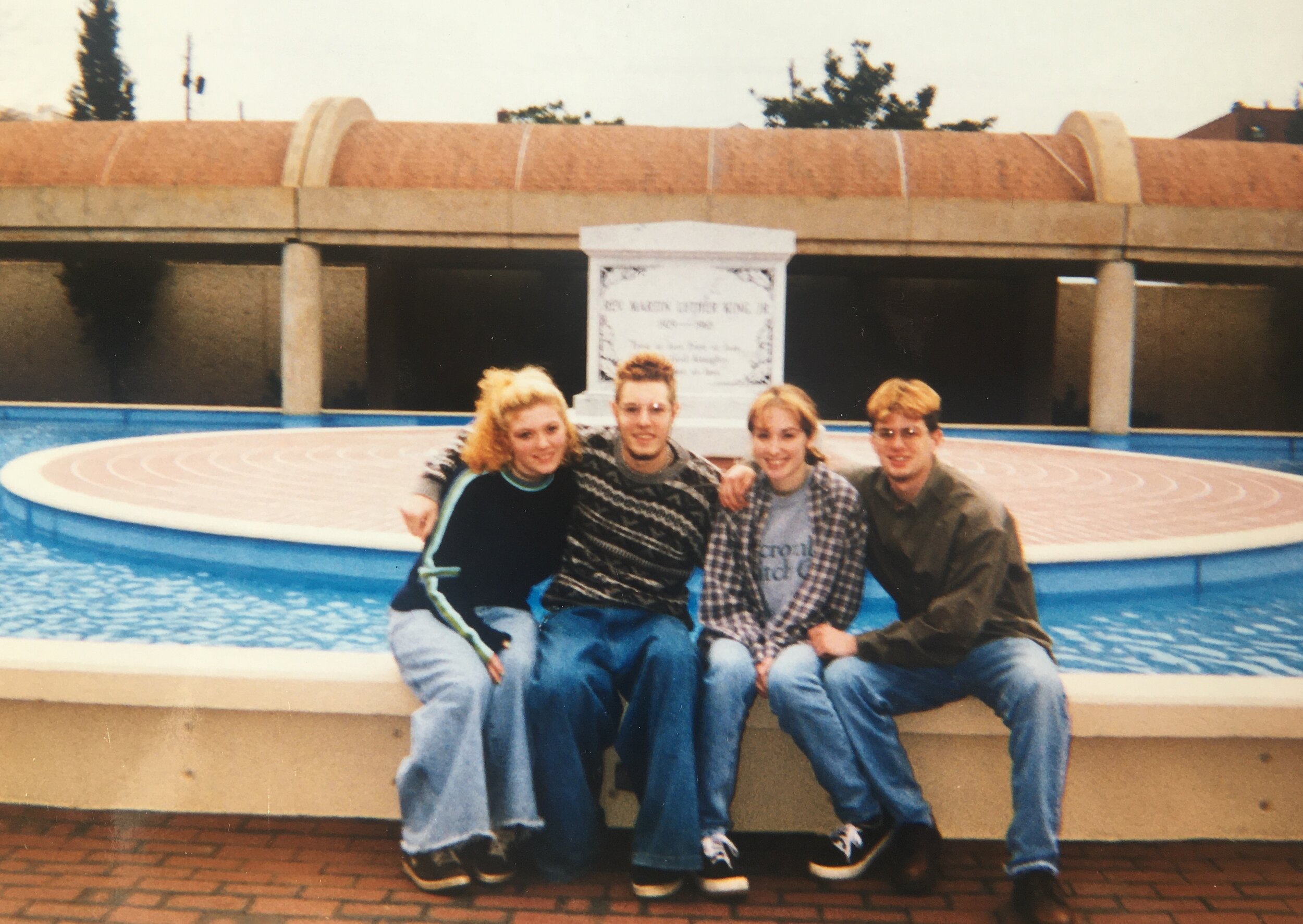Look at this picture. What do you see?
It was 1997 in Atlanta. I was 19. I had recently moved there, with my questionable hairstyle and 42” JNCO jeans (although I still spike my hair), when a couple of my friends came to visit. We did what tourists do: went to Stone Mountain, the Conyers Monastery, Centennial Olympic Park, Underground Atlanta, the Westin rooftop restaurant, CNN, Coke’s HQ, etc.
This day was a bit gloomy. It was cool and overcast and featured on-and-off misting. It didn’t matter, our plans stayed the same. We ventured down to Centennial Olympic Park and Underground Atlanta where we joked around like 19-year-olds do and posed for funny photos to document the trip.
But back then, photos were a bit different — they came with a cost. We took ours with disposable cameras. There were no smartphones, no Instagram, and no selfies. After all, without Instagram, there was no use for them. Back then you had to be thoughtful about pushing that “take photo” button. One after another, we posed, turned the wheel until we heard the camera click, and pushed that precious take photo button.
As we made our way through Centennial Park and Underground Atlanta we had one last stop planned. It was to King Plaza, the gravesite of MLK Jr.
We made the quick drive from downtown to the site, parked, and began to walk around. It was eerily deserted, with the lone exception of one security officer casually patrolling the grounds. We walked around processing what we were seeing. It became real that this young man was killed advocating for something that seems so inherently basic: Equality. Justice. Freedom.
But during that time, he was judged, labeled, and, dare I say, feared for going against the status quo, for questioning what is deemed “right.” He was labeled by some, or many, a troublemaker. A radical. A villain.
He fought for something all people should have. And he paid the ultimate price because of it.
We took out our cameras, but something stopped us — our earlier inability to save pictures for the next stop. There were no photos left in the cameras. This was going to have to be one of those moments we simply experienced (something more people nowadays should do). But then it all changed.
We were no longer alone.
A lone figure appeared and slowly made her way toward us. As she approached we gave each other one of those quick hello nods and welcoming smirks — you know the kind. We continued to look around for a few moments and then I noticed something. She was holding a camera of her own.
I walked over and introduced myself. I explained our camera situation and made her a proposition: If she would take a photo of us and send me a copy, I would mail her the money for developing her film (yep, we used to have to PAY to get our photos, even if your thumb covered up the shot).
She gladly accepted. Was it sincere, or did she just not want to be rude to an odd request? I didn’t know.
As she snapped a photo of our group, I asked if I could take a photo with her. I can still remember her face. She smiled and said that she’d love to — proudly posing with me and my friend Kevin.
We continued talking for a few moments. She told me she lived in Baltimore but was considering relocating to Atlanta. She traveled from Baltimore via bus and was heading back home the following day. Before we parted ways, I provided this stranger with my home address. We chatted for a brief moment and went our separate ways.
One month later …
I received an envelope in the mail. The Baltimore return address was unfamiliar to me. I had mostly forgotten about the pictures. After all, even though the task was small, it was a lot to ask a stranger to do. Inside the envelope were four copies of each photo (one for each of us) along with a handwritten note.
I had saved that note for many years, but between repeated moving and organizing it had gone missing. The note was heartfelt. In essence, it remarked how grateful she was to have met us on that overcast day in Atlanta. How, at the grave of the man who advocated for basic human rights and race equality, race did not matter between two strangers. How one stranger asked for some form of help (as trivial as it might have been), and another gladly provided that help. How, on some tiny scale, he did not die in vain.
I responded with a note of my own (along with more than enough to cover the photo developing). I echoed the same sentiments to her. That no matter what you see on the news, most people do care and share the same belief in equality.
As I post this on MLK Jr. Day, I reflect on days like these that truly matter, yet seem insignificant at the time. I hope this woman from Baltimore/Atlanta remembers this day as fondly as I do.
So now, when you look at this photo, what do you see?
To me, the photo is more than a photo. It’s a story. A feeling. A moment of peace. A small representation of all that is good in the world. While there is a lot of progress that needs to be made, this moment of unconditional acceptance and kindness is what MLK Jr. worked so hard and gave his life for.


